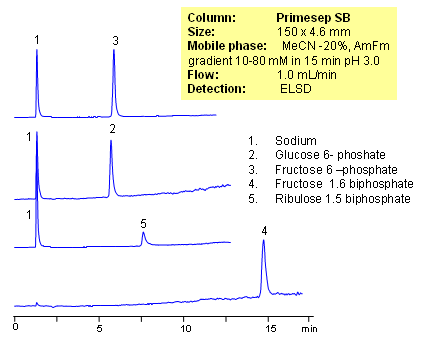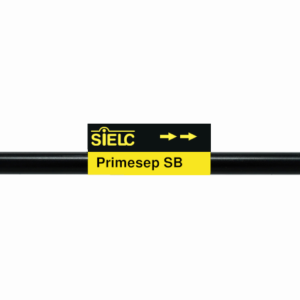
Sugar phosphates occur in biological systems. Sugar phosphates are parts of two metabolic pathways: glycolisis and pentose phosphate pathways. One of the purposes of sugar phosphates is to store and transfer energy in cells. Because of the presence of sugar fragment and phosphate moiety these molecules are very polar in nature. Mixed-mode chromatography was applied for separation of glucose and fructose phosphates and diphosphates. Compounds are separated based on anion-exchange properties with diphosphates retaining longer than mono phosphates. Monitoring is done by ELSD.
| Column | Primesep SB, 4.6×150 mm, 5 µm, 100A |
| Mobile Phase | MeCN/H2O – 20/80% |
| Buffer | AmFm – pH 3.0 |
| Flow Rate | 1.0 ml/min |
| Detection | ELSD |
| Class of Compounds |
Sugars |
| Analyzing Compounds | Sodium, Glucose 6- phosphate, Fructose 6 –phosphate, Fructose 1.6 biphosphate, Ribulose 1.5 biphosphate |
Application Column
Primesep SB
The Primesep family of mixed-mode columns offers a wide variety of stationary phases, boasting unprecedented selectivity in the separation of a broad array of chemical compounds across multiple applications. Corresponding Primesep guard columns, available with all stationary phases, do not require holders. SIELC provides a method development service available to all customers. Inquire about our specially-tailored custom LC-phases for specific separations.
Select optionsFructose 6-Phosphate
Glucose 6-Phosphate
Ribulose 1,5 Bisphosphate
Sodium





